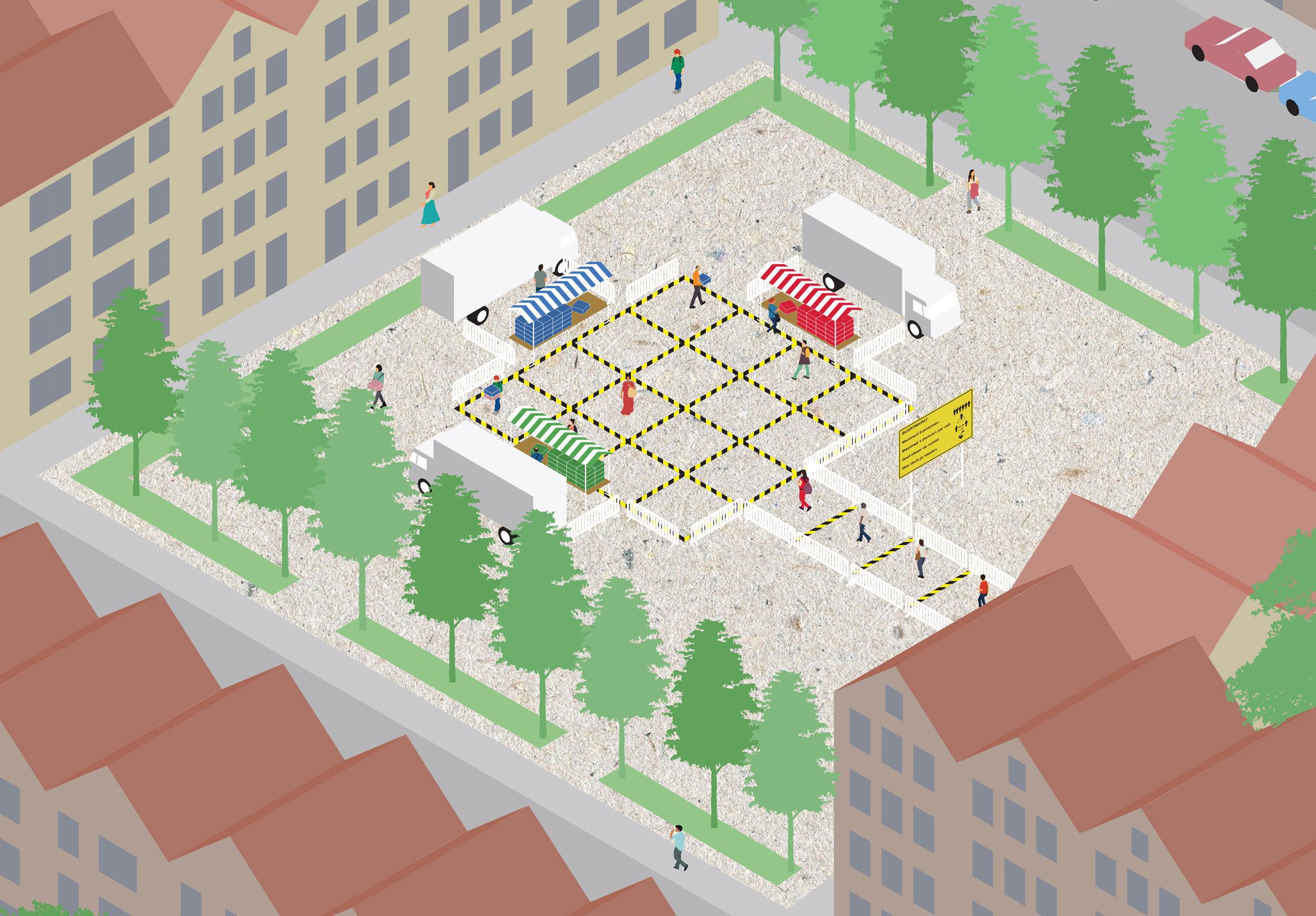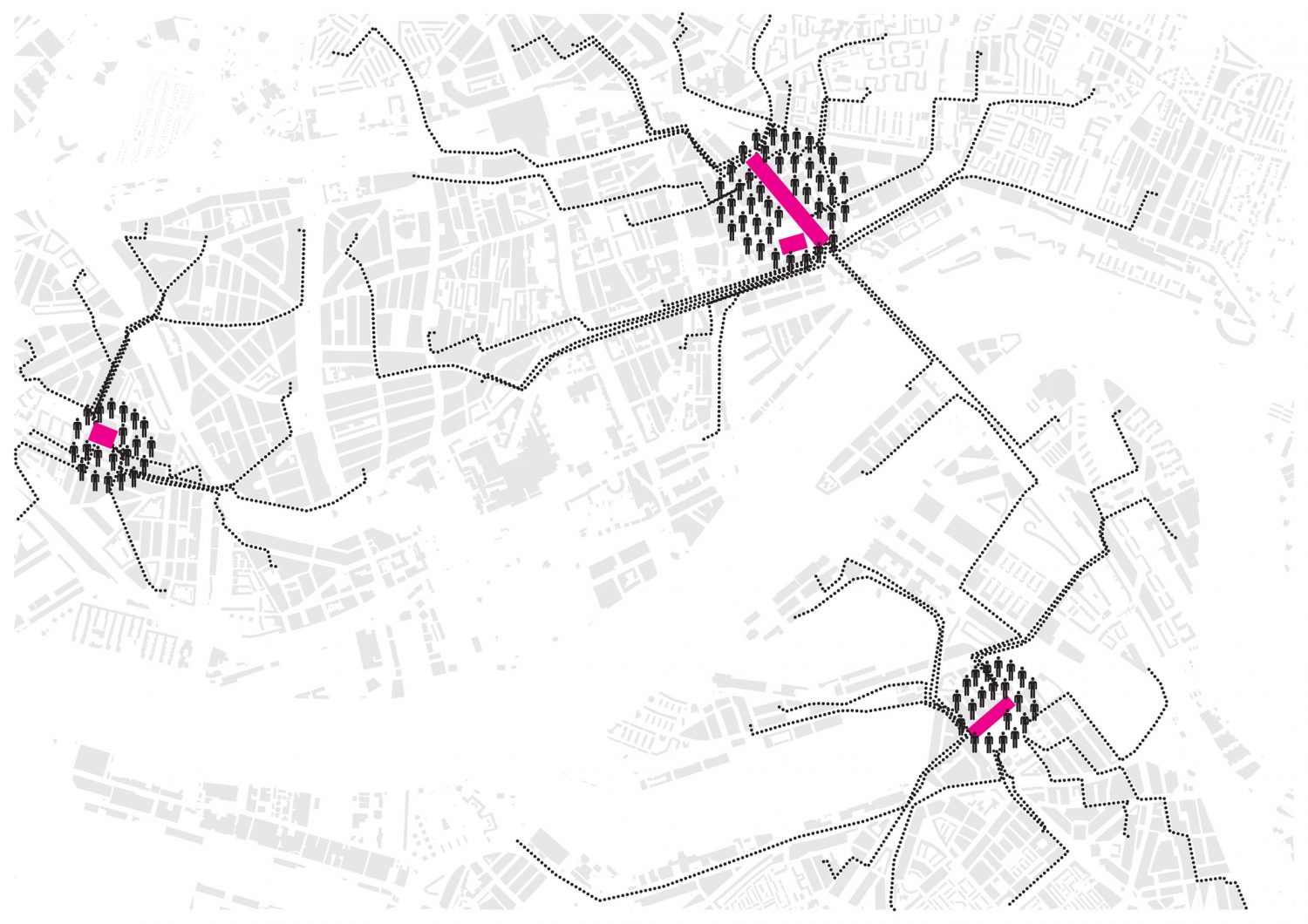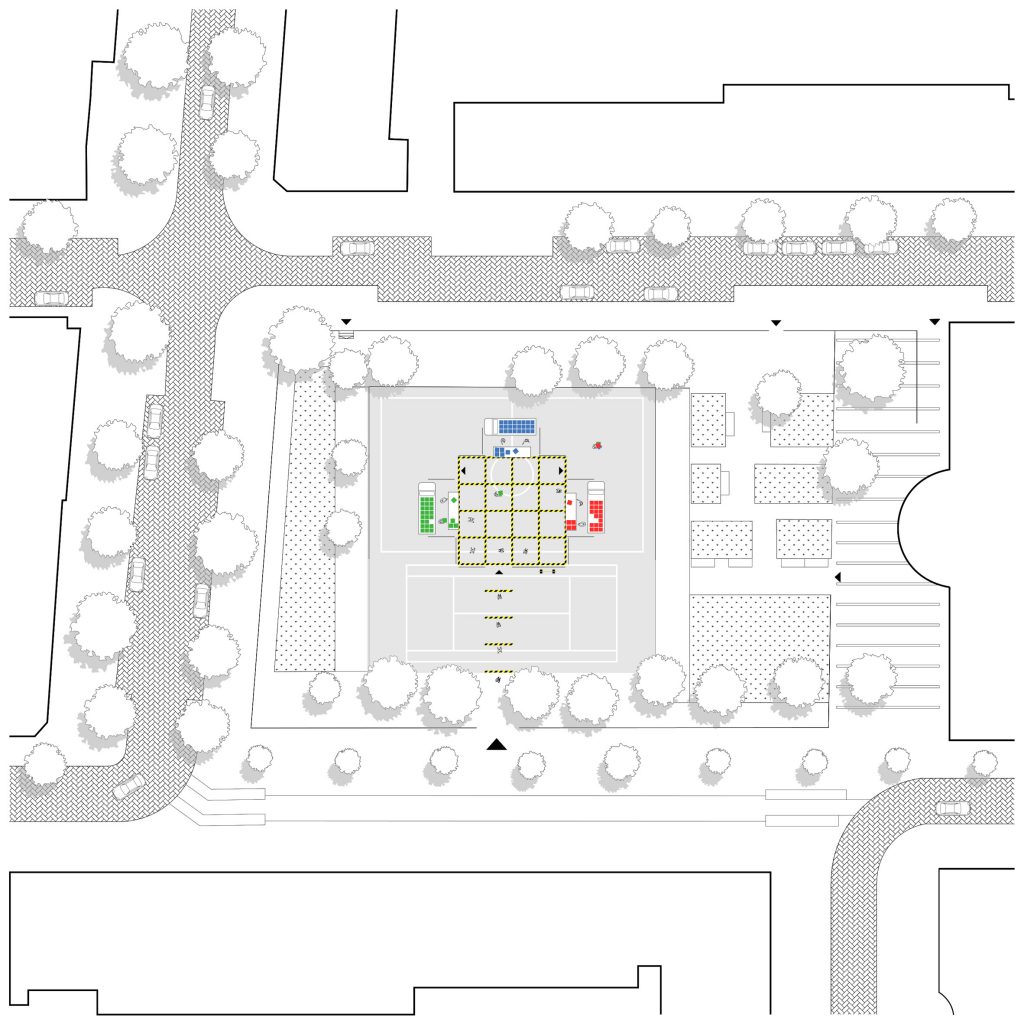ROTTERDAM-BASED DESIGN STUDIO SHIFT ARCHITECTURE URBANISM HAS CREATED THE MOBILE HYPERLOCAL MICRO MARKETS WHERE WE CAN EASILY BUY FRESH PRODUCE CLOSER TO OUR HOMES, WHILE KEEPING THE SOCIAL DISTANCE FROM OTHER SHOPPERS
TEXT: SUTEE NAKARAKORNKUL
PHOTO COURTESY OF SHIFT ARCHITECTURE URBANISM
(For Thai, press here)
In the current situation, many people would agree that what we need most is probably something uncomplicated, especially when it comes to food.
Rotterdam-based design studio Shift Architecture Urbanism has created the mobile Hyperlocal Micro Markets where we can easily buy fresh produce closer to our homes, while keeping the social distance from other shoppers.
This project was developed after many cities around the globe temporarily closed their wet markets. Because of this, an increasing number of people are instead going to supermarkets, occasionally crowding them and raising the risk of spreading the coronavirus; meanwhile, small businesses are losing their income.
Hyperlocal Micro Markets distribute from large markets that remain open directly to the neighborhoods. A micro market, each standard unit has a 16-square grid, is clearly marked with tapes and can be easily set up and knocked down. With one entrance and two exits, the market is equipped with three stalls, one lining each side. Each stall has two counters: one for ordering, the other picking up. To keep a good traffic flow and maintain the appropriate distance, only six people are allowed inside at a time, and one person in one square.
While being simple and effective, this idea, many have pointed out, still have many restrictions–limitation of products to only three categories, vegetables, fruits and meat, and the need for co-operation of many sectors. Besides, online shopping has been proved more convenient. And here in Thailand, the mobile grocery-store pick-up trucks, aka “Rot Phumphuang”, have been around for a long time and are doing better business these days.
Anyhow, this appealing concept is adaptable for small communities, away from cities and shopping malls, especially now that we’re practising what WHO suggests to be renamed as “physical” distancing, until who knows when.





